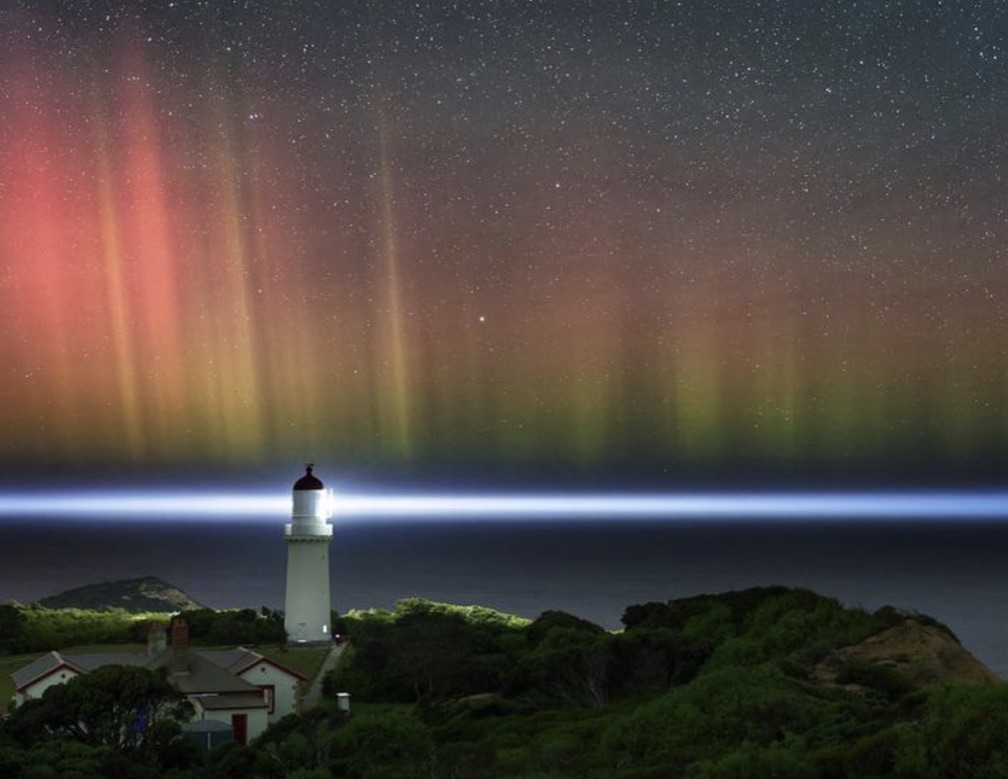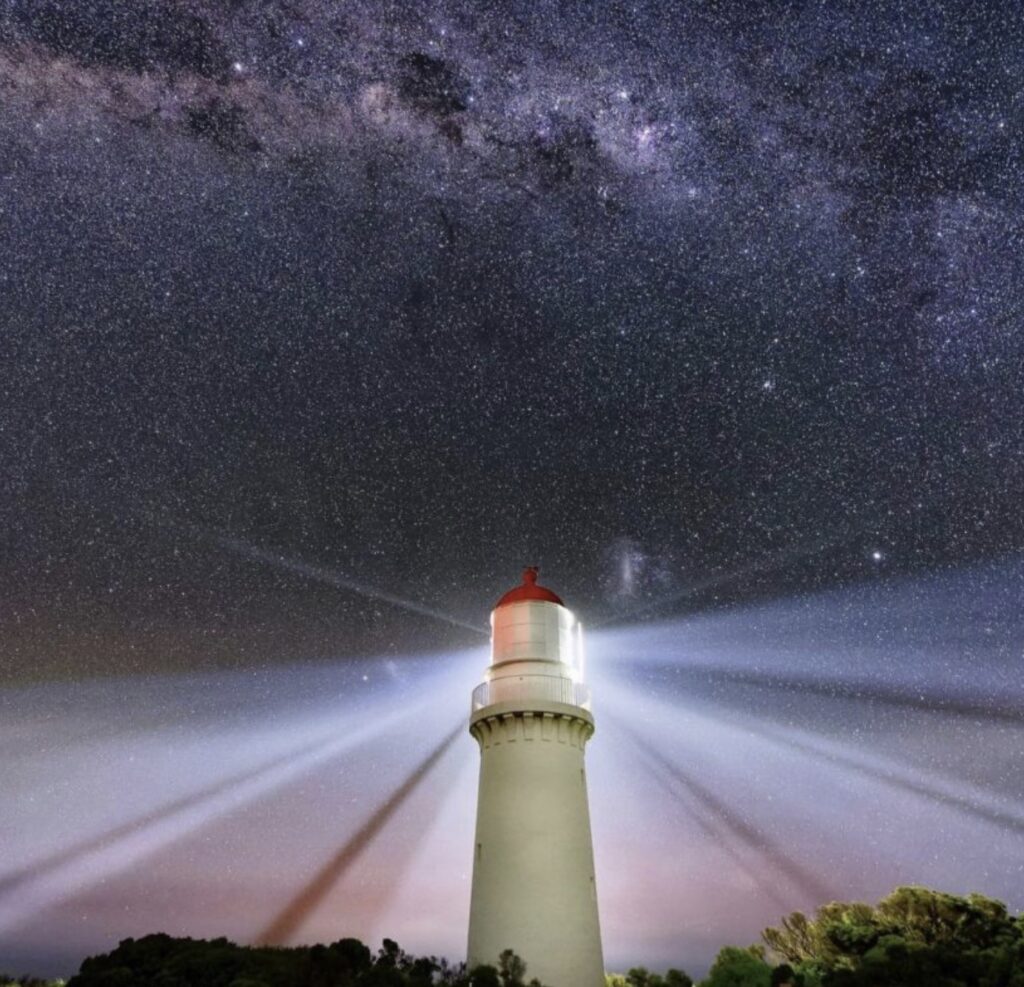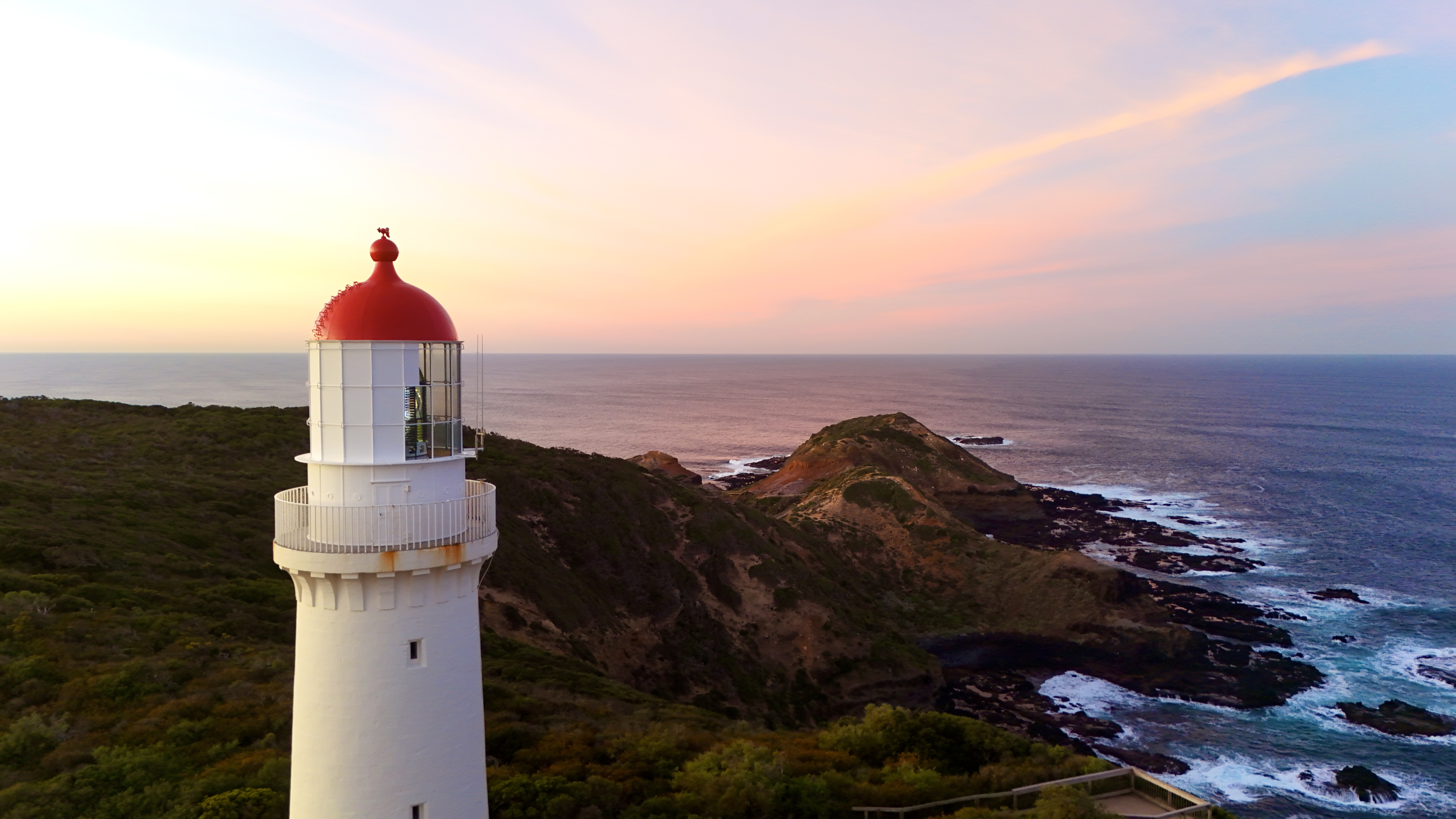
Cape Schanck is located at the southernmost tip of the picturesque but dangerous Mornington Peninsula and is one of a triangle of Bass Strait lights, the other two being at Cape Otway to the west and at Cape Wickham to the south on King Island. This lighthouse is the second oldest lighthouse in Victoria and regarded as being in the most original condition of all Australian heritage lighthouses.
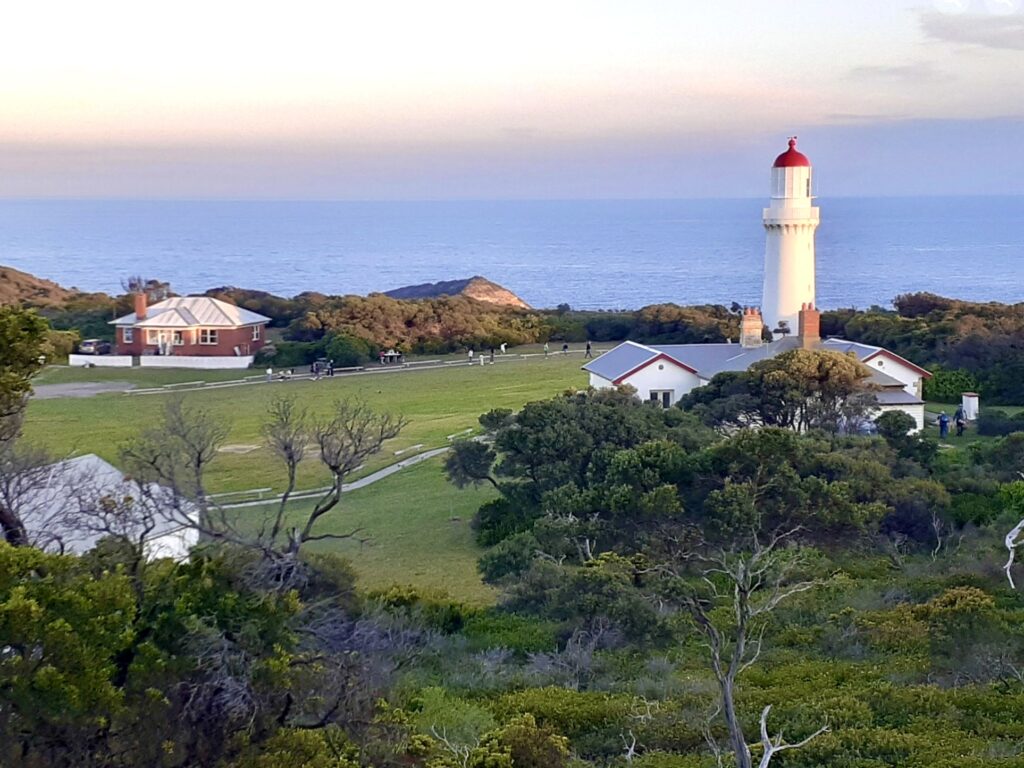
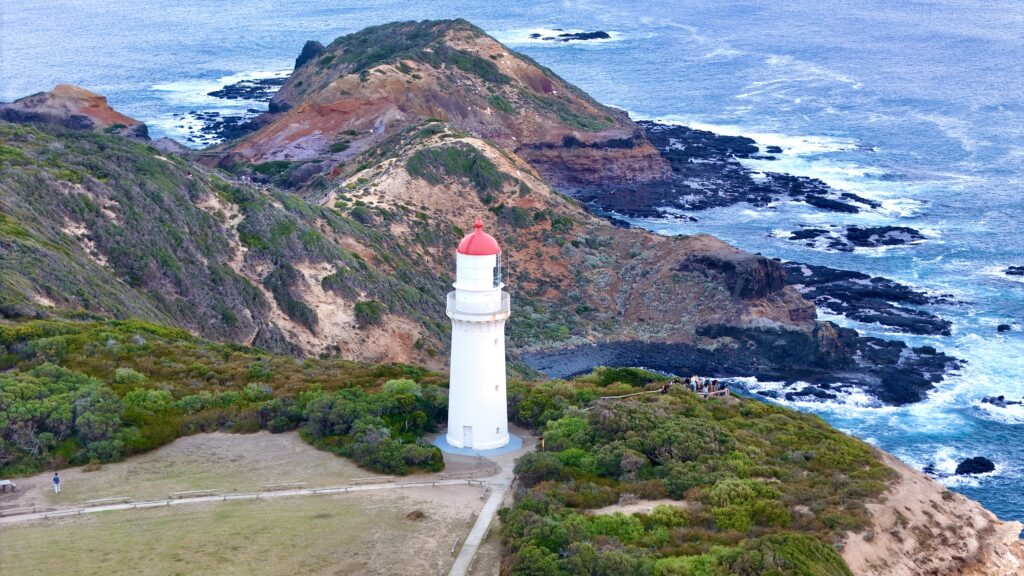
Cape Schanck Lighthouse presides over the eastern approaches to Port Phillip Bay, the gateway to Port Melbourne and Geelong, and the western approaches to Western Port Bay. This critical juncture has long been recognised as demanding very careful navigation with unpredictable and often extreme weather, strong currents, submerged reefs and the peninsula’s jagged coastline creating treacherous conditions for vessels approaching from both the east and west.
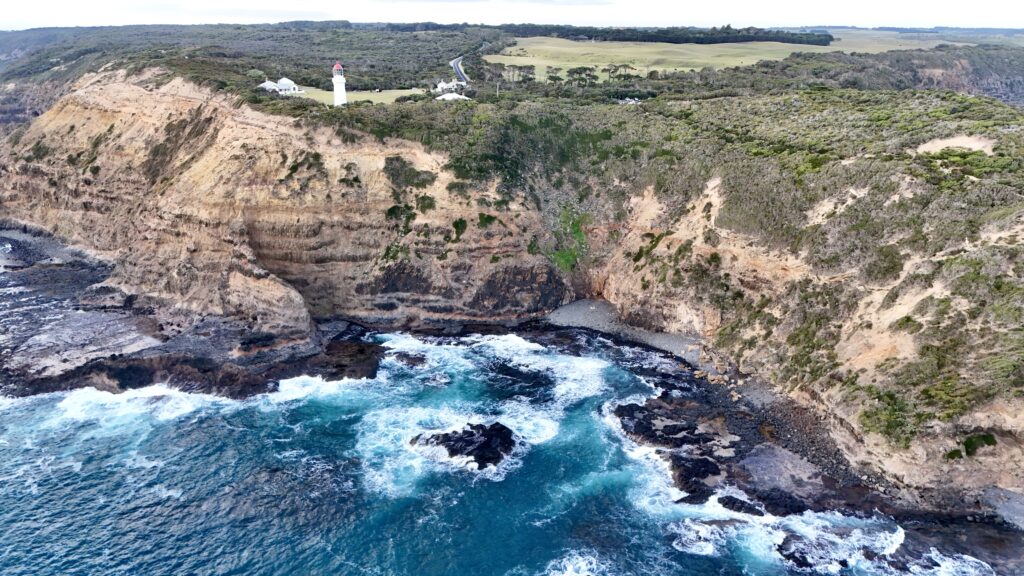
The lighthouse was commissioned in 1859 as part of a comprehensive colonial program to illuminate Victoria’s dangerous coastline. The urgent need for a lighthouse at this location had been highlighted by several maritime disasters, including the 1840 wreck of the SS Corsair which foundered on rocks near the cape with significant loss of life. As trade and passenger traffic to the booming colony increased during the gold rush era, protecting shipping along this crucial approach to Melbourne became an economic and humanitarian priority.
Designed by the esteemed government architect Charles Maplestone, Cape Schanck Lighthouse exemplifies the elegant functionality of mid-Victorian lighthouse architecture. The distinctive tower rises 21m from base to lantern, with a focal plane 80m above sea level due to the cape’s elevation. This commanding height enables the light to be visible for approximately 25nml, serving as a crucial waypoint for vessels navigating between Port Phillip Bay and the western approach to Bass Strait.
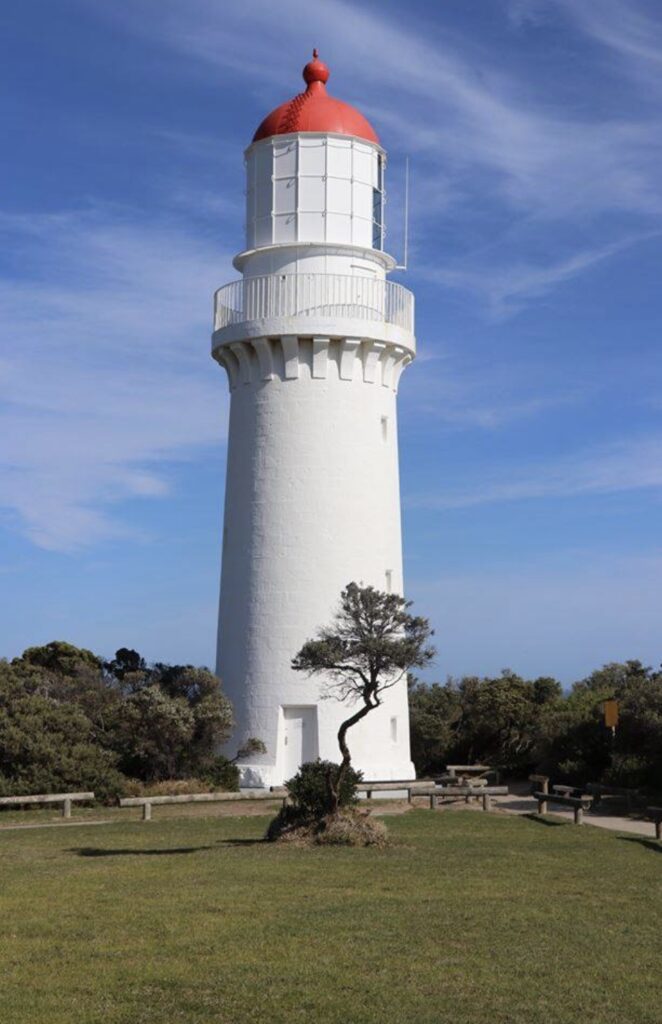

The lighthouse’s construction represents a triumph of colonial engineering in challenging conditions. Built from locally quarried limestone blocks, the tower features walls nearly two meters thick at the base, tapering gracefully as it rises. The structure’s distinctive stacked stone pattern and classical proportions make it one of Australia’s most aesthetically pleasing lighthouses, while the robust construction has withstood over 160 years of punishing coastal weather without significant structural compromise.
One of Cape Schanck’s most distinctive design features is its stone spiral staircase, an architectural feature rarely seen in Australian lighthouses. The 66 bluestone steps wind upward in a perfect helix from base to lantern room, each precisely cut to fit without central support. This exceptional feat of stonemasonry demonstrates the high level of skills available in colonial Victoria and remains one of the lighthouse’s most impressive features.
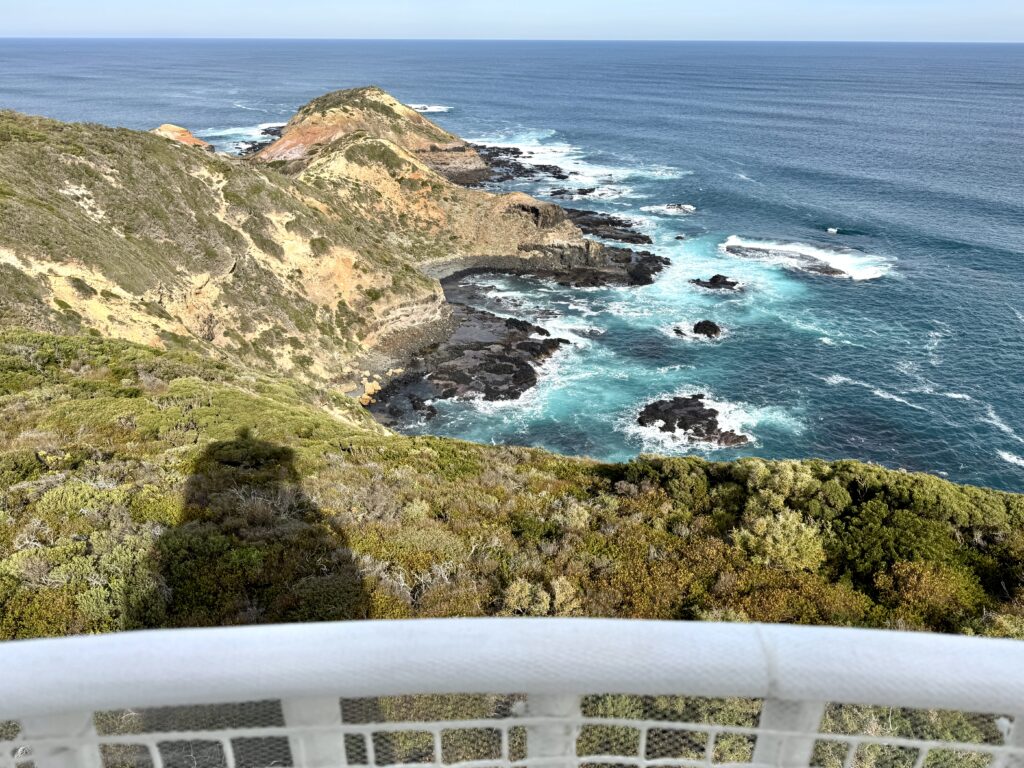
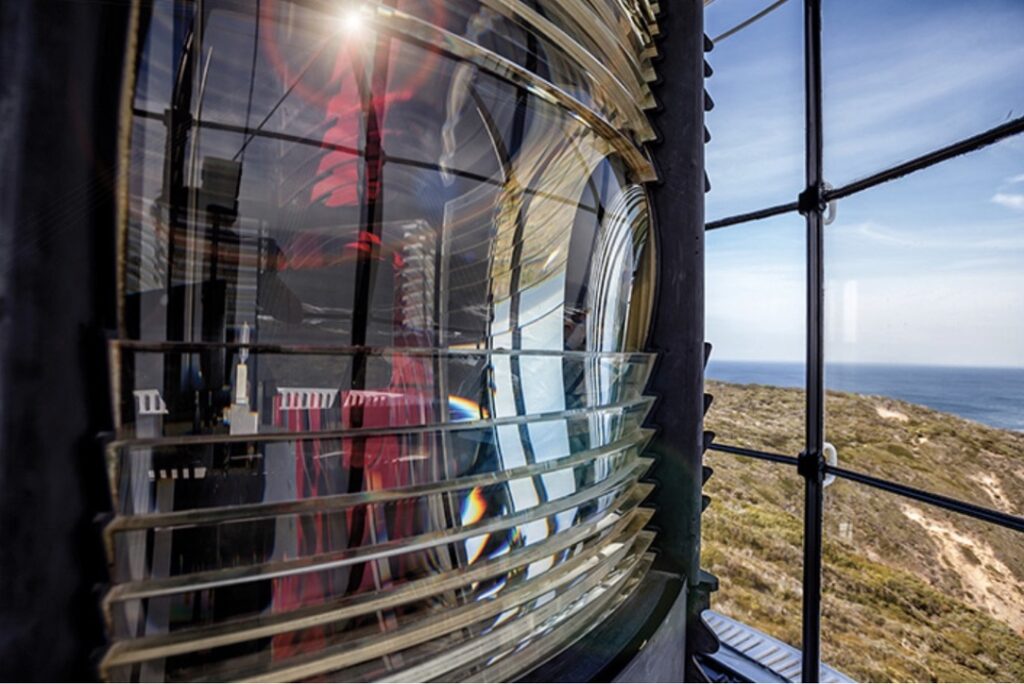
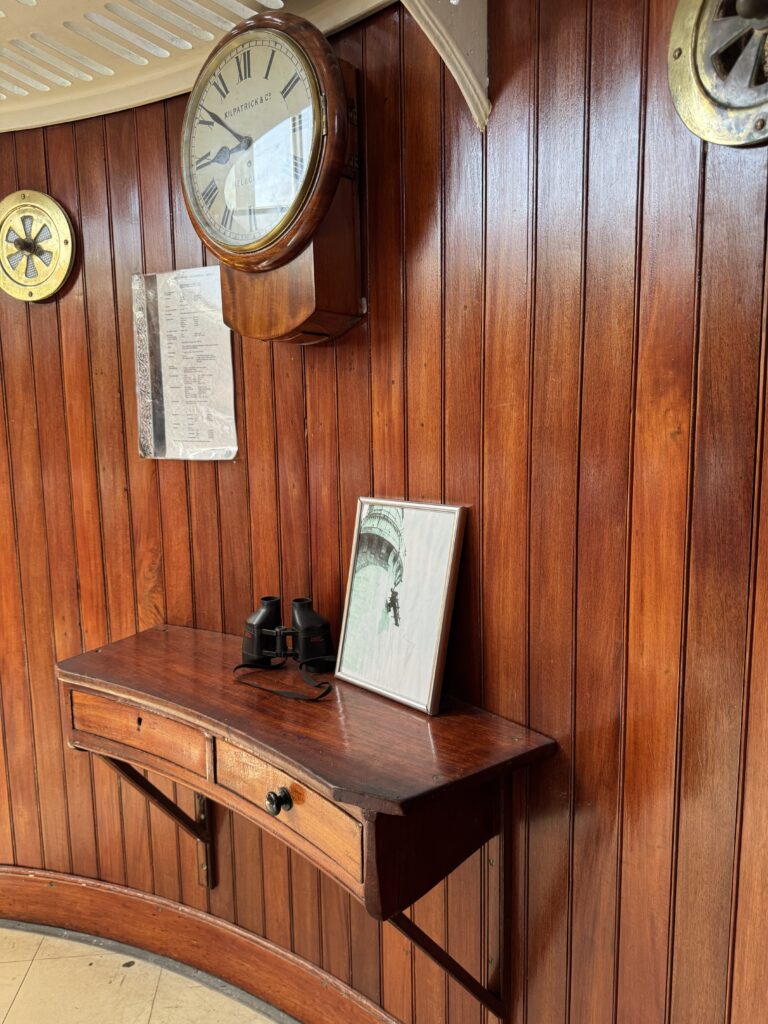
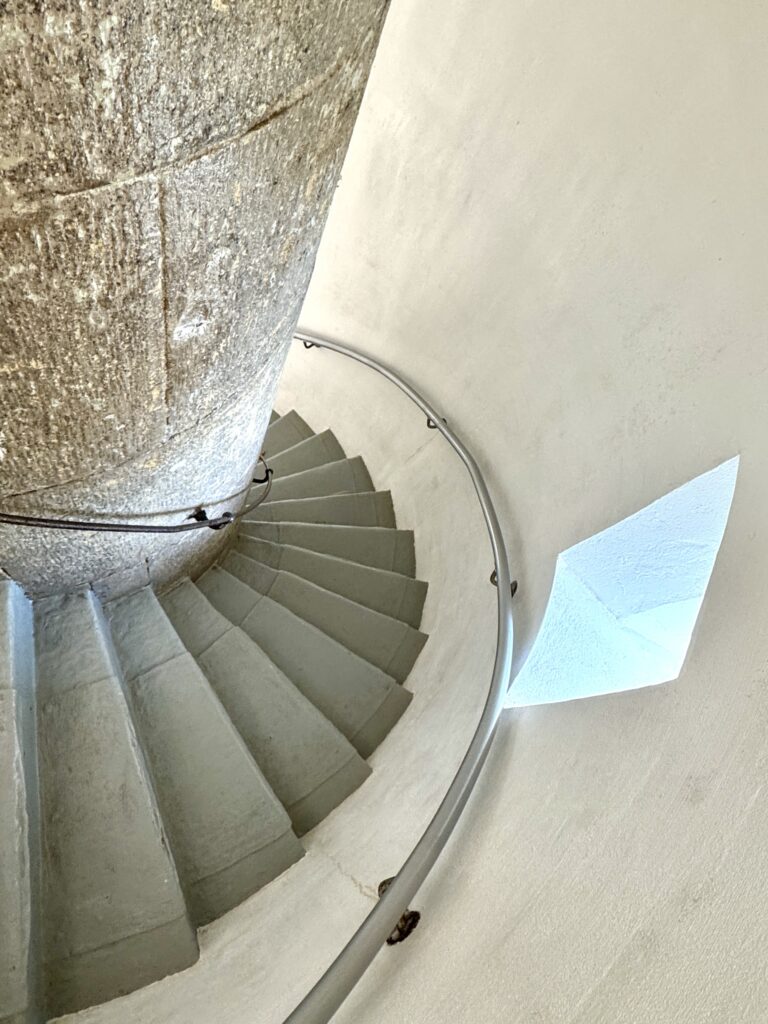

When first commissioned, the lighthouse was equipped with a state-of-the-art optical apparatus manufactured by Chance Brothers. It was a relatively simple array of oil lamps with polished reflectors, producing a fixed white light visible far out to sea. This system was upgraded in 1887 with the installation of a first order Fresnel lens, dramatically improving the light’s intensity and projection distance. The other advantage of this new lens was that it was rotated by a clockwork mechanism which enabled it to have a distinctive flashing characteristic which allowed mariners to positively identify Cape Schanck from other lighthouses.
Throughout its operational history, the lighthouse underwent several significant technological transitions. Most significantly, electrification came in 1939, marking a revolutionary improvement in reliability and brightness. The lighthouse was fully automated in 1994, ending 135 years of onsite keepers at the station.
Life for the keepers at Cape Schanck offered a blend of isolation and relative convenience with a number of towns relatively close by and accessible. The lighthouse complex also included substantial accommodation for three keepers and their families, arranged in a distinctive semi-detached configuration that reflected the hierarchical structure of the lighthouse service.
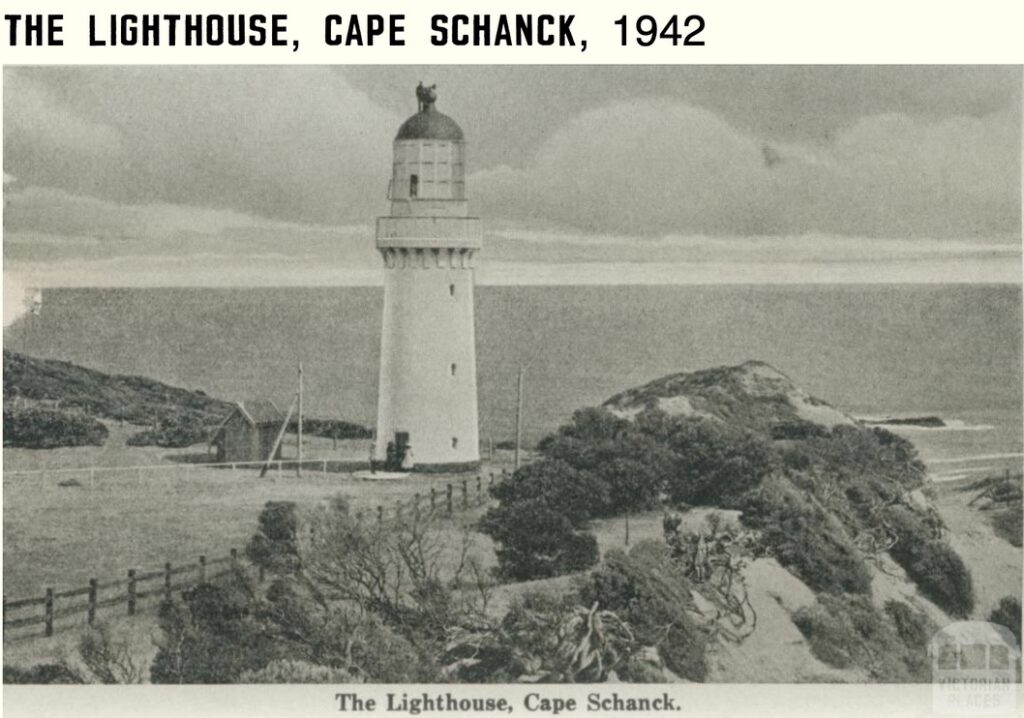
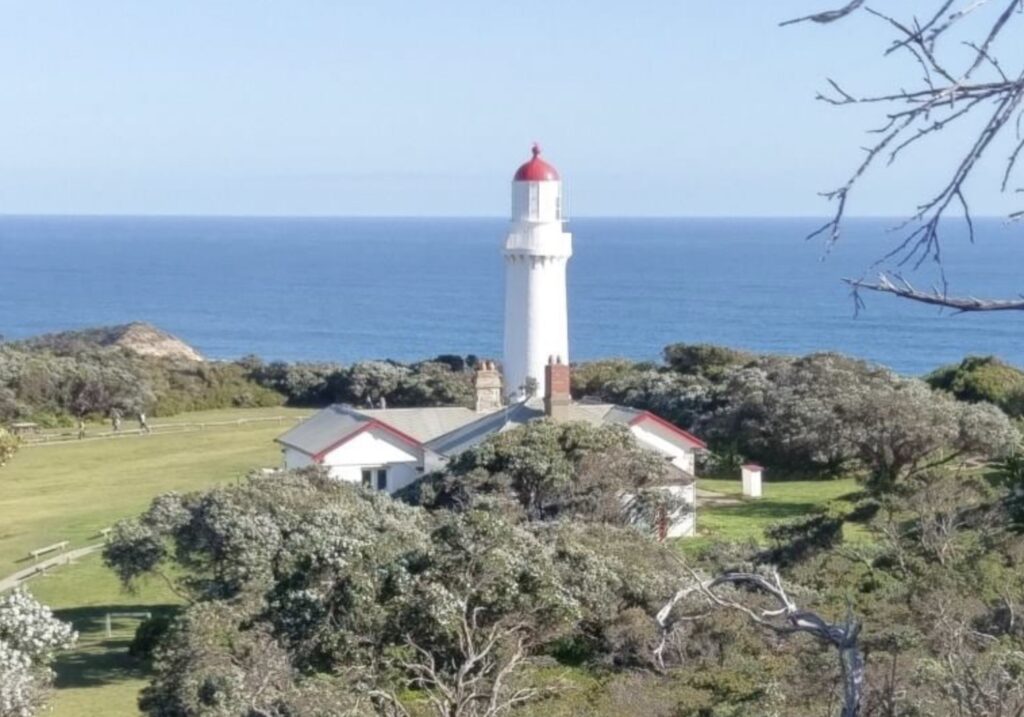
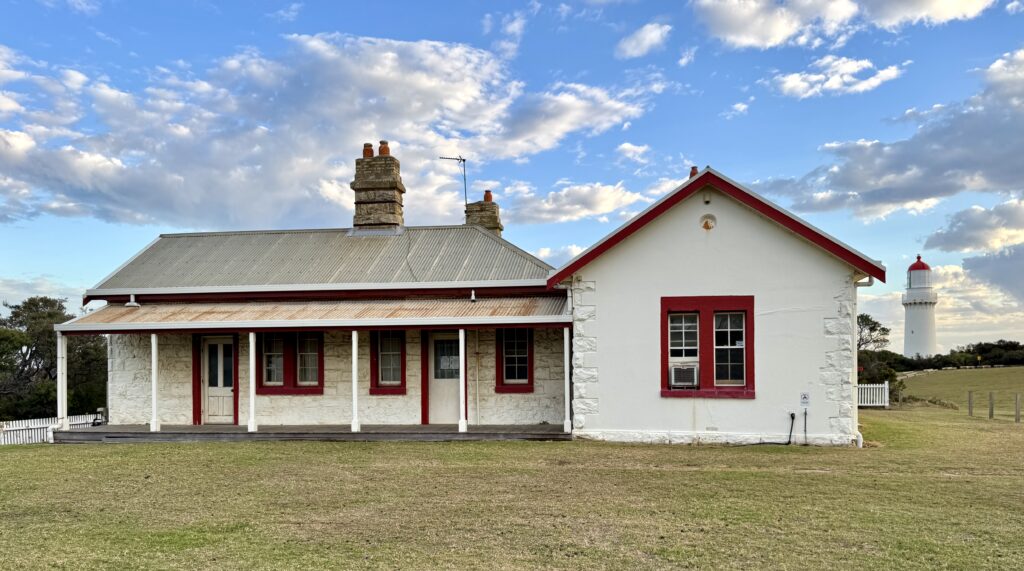
Despite its relatively accessible location, environmental conditions at Cape Schanck subjected both the lighthouse and its keepers to considerable challenges. The cape’s exposed position makes it particularly vulnerable to the fierce southwesterly gales that sweep through Bass Strait. Historical records document numerous storms where winds exceeding 120 kph battered the station, with waves throwing spray high enough to reach the tower windows despite their elevated position.
The lighthouse keepers maintained meticulous logs documenting these weather extremes, with entries describing nights where the entire headland seemed to tremble under the assault of Southern Ocean storms. During particularly severe weather, keepers would maintain continuous watch, ensuring the light remained operational through conditions that would occasionally prevent relief staff from reaching the station for weeks at a time.
The waters surrounding Cape Schanck have claimed many vessels throughout the years, both before and after the lighthouse’s warning operation. Maritime records document many incidents including the wrecking of the SS Cheviot in 1887 with the loss of 35 lives on the beach that now bears it’s name (and which is was the site of one of Australia’s greatest mysteries when the serving Prime Minister, Harold Hold, disappeared there while swimming in 1967), and the loss of the SS Alert in 1893, which struck rocks near the lighthouse during thick fog with the loss of all 16 onboard, making it one of the worst maritime disasters in Victoria’s history. Even with the light’s guidance, the combination of fog, complex currents, and the peninsula’s ragged coastline continued to pose significant dangers to both recreational boating and commercial shipping.
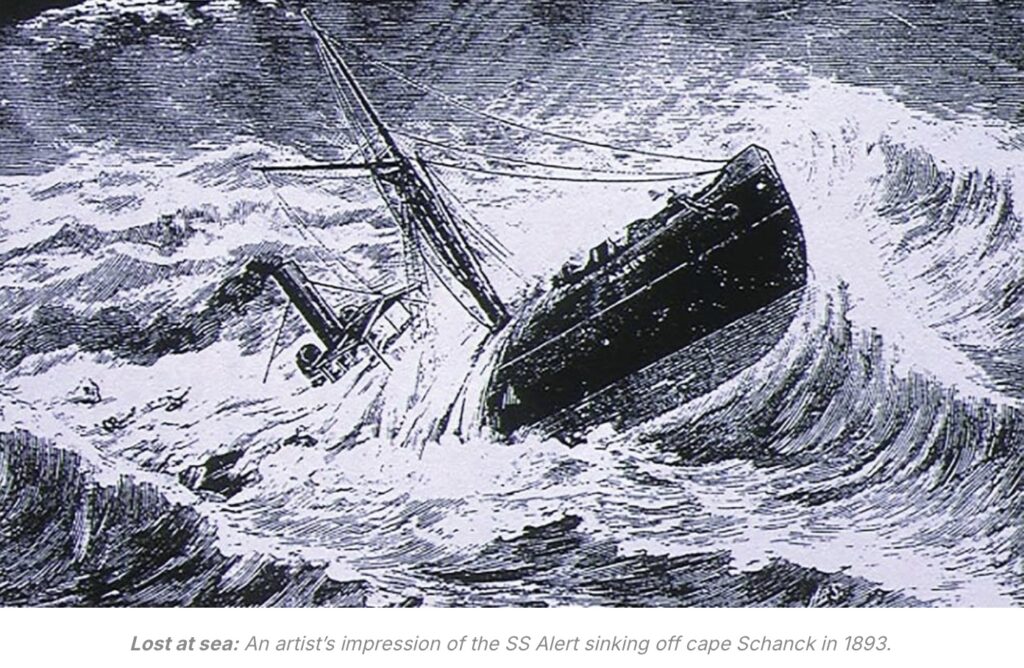
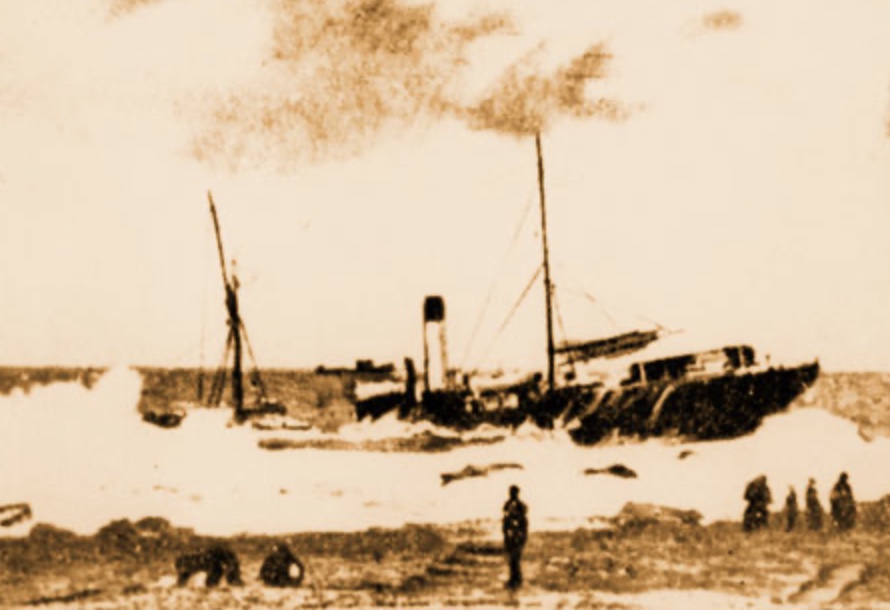
Like many historic lighthouses, Cape Schanck has accumulated a rich folklore of supernatural occurrences over its long history. The most persistent stories involve reports of a “misty woman” allegedly seen near the tower during storms, believed by many to be connected to the tragic drowning of a keeper’s young daughter in the 1880s. Numerous keepers and their families documented unexplained phenomena including mysterious footsteps on the spiral staircase when no one was present, and the occasional sound of a child crying heard near the cliff edge.
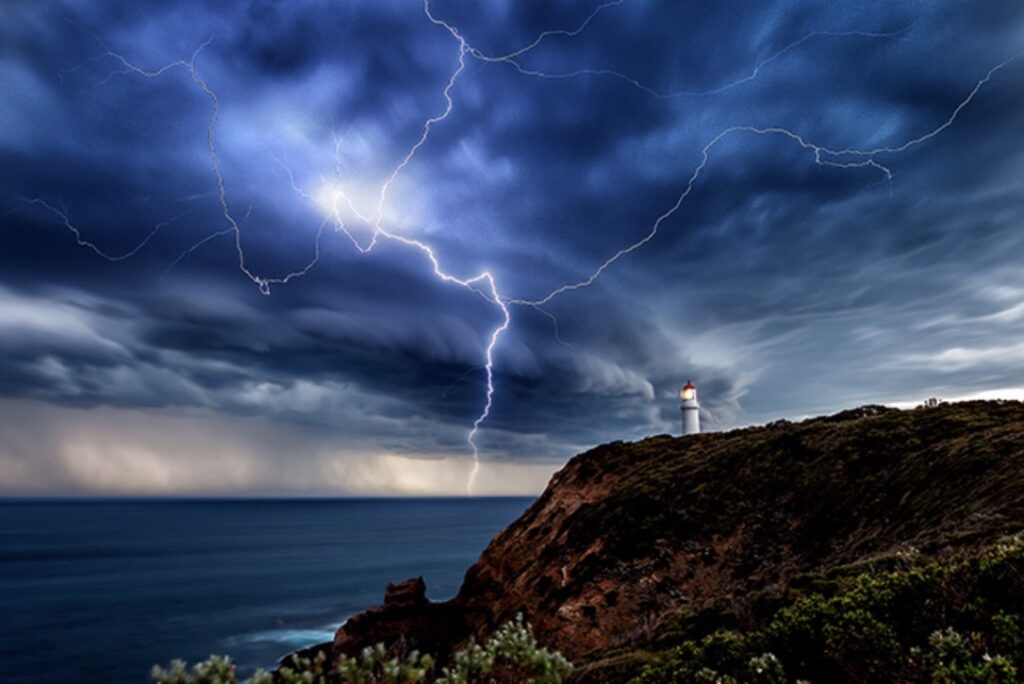
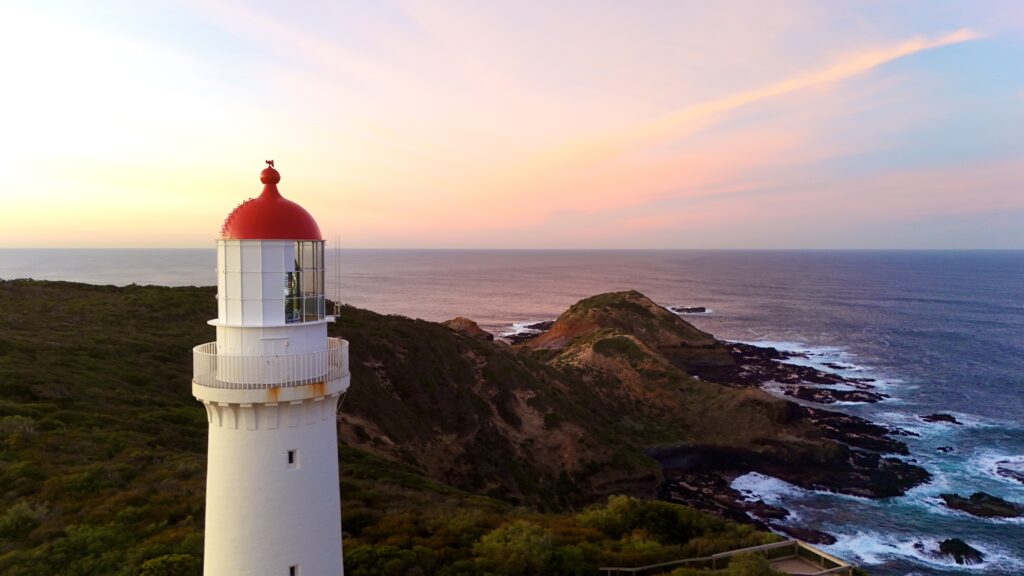
One particularly well-documented account from 1912 describes how Head Keeper James Ferguson repeatedly observed a female figure climbing the tower stairs late at night, only to find the lantern room empty upon investigation. These occurrences became so frequent that Ferguson formally requested a transfer, citing the psychological strain of these experiences. His replacement, sceptical of such reports, allegedly witnessed similar phenomena within weeks of arriving at the station.
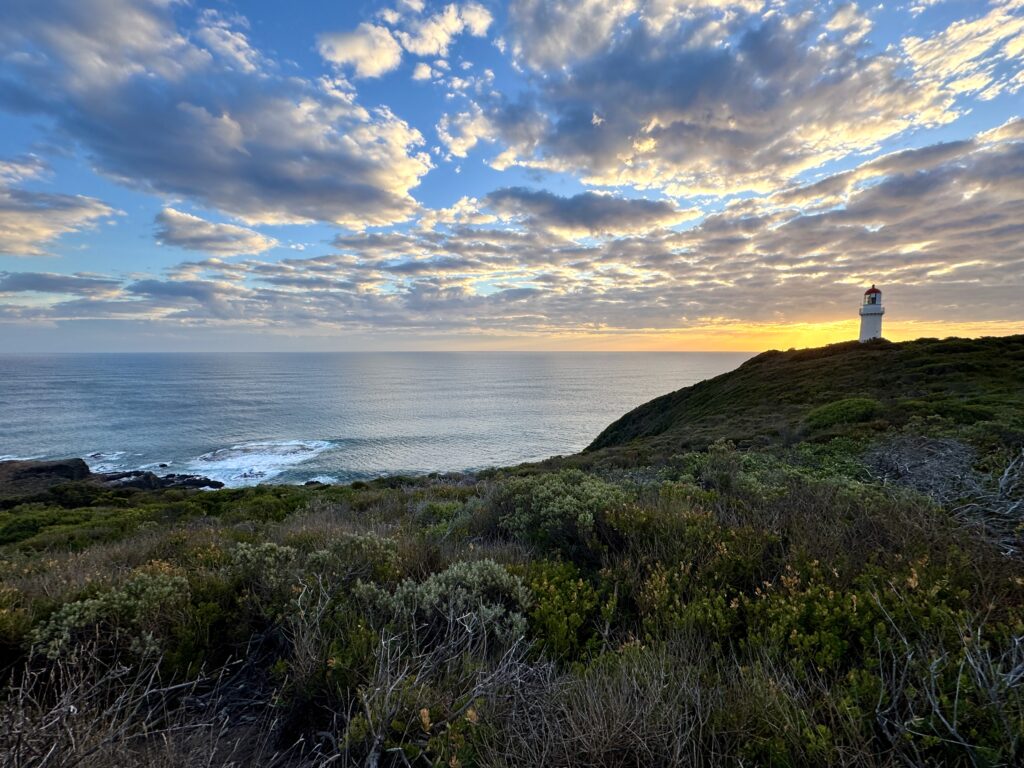
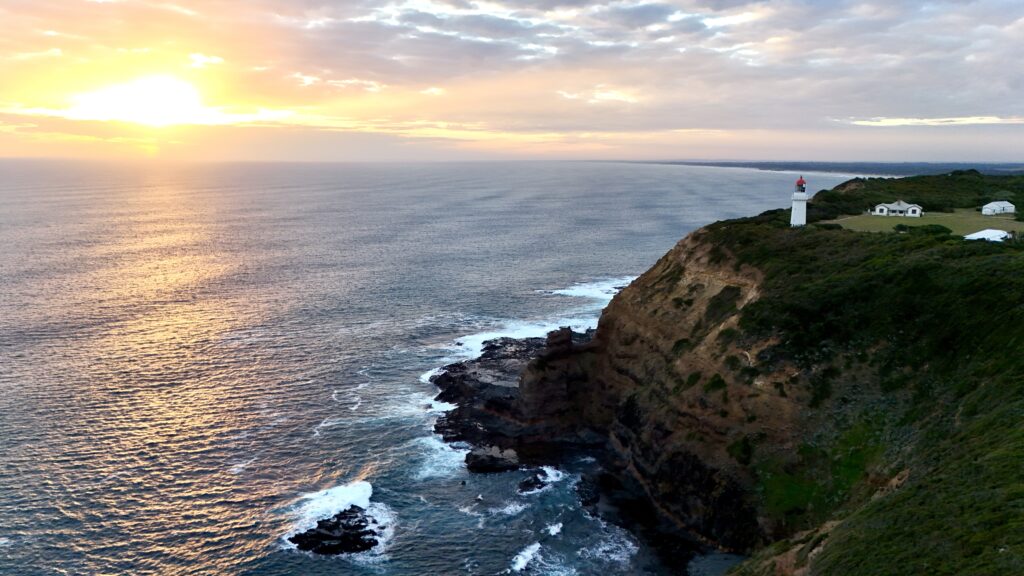

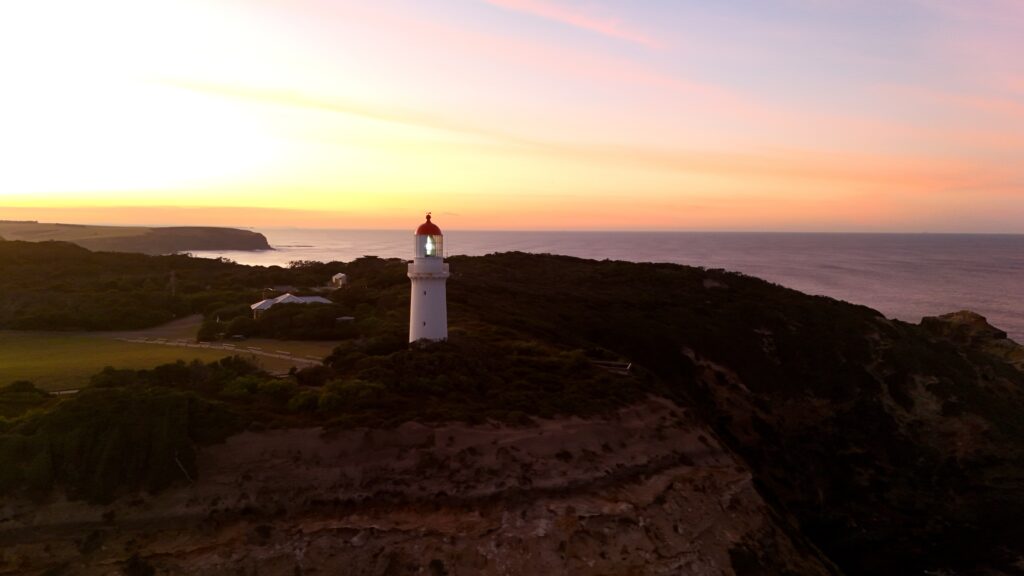
Despite automation ending the resident keeper tradition, the lighthouse found new purpose as one of Victoria’s most significant maritime heritage sites. Parks Victoria assumed management responsibility for the historic complex in 1996, developing a comprehensive visitor program that has made Cape Schanck one of Victoria’s premier heritage destinations.
Today, Cape Schanck is one of the most accessible and informative lighthouse experiences in Australia. The keeper’s quarters now house a museum documenting the station’s history, while guided tours allow visitors to climb the remarkable spiral staircase to the lantern room.
Having withstood over a century and a half of wild storms, witnessed the evolution of maritime traffic from sail to steam to modern shipping, and transitioned from oil lamps to computerized systems, Cape Schanck Lighthouse stands as an enduring monument to Australia’s maritime history. Its elegant tower, still gleaming white against the dramatic coastal landscape, continues the unbroken vigil that began in the colonial era, a living connection to the seafaring traditions that helped shape the nation.
p.s. Needless to say the photos below are not taken by me, they were taken by a very talented photographer called Rick Viola who managed to capture the Aurora Australis over Cape Schank and an amazing astro shot of the Milky Way transposed against the light beam from Cape Schank. I can only aspire to be as good as this one day!
